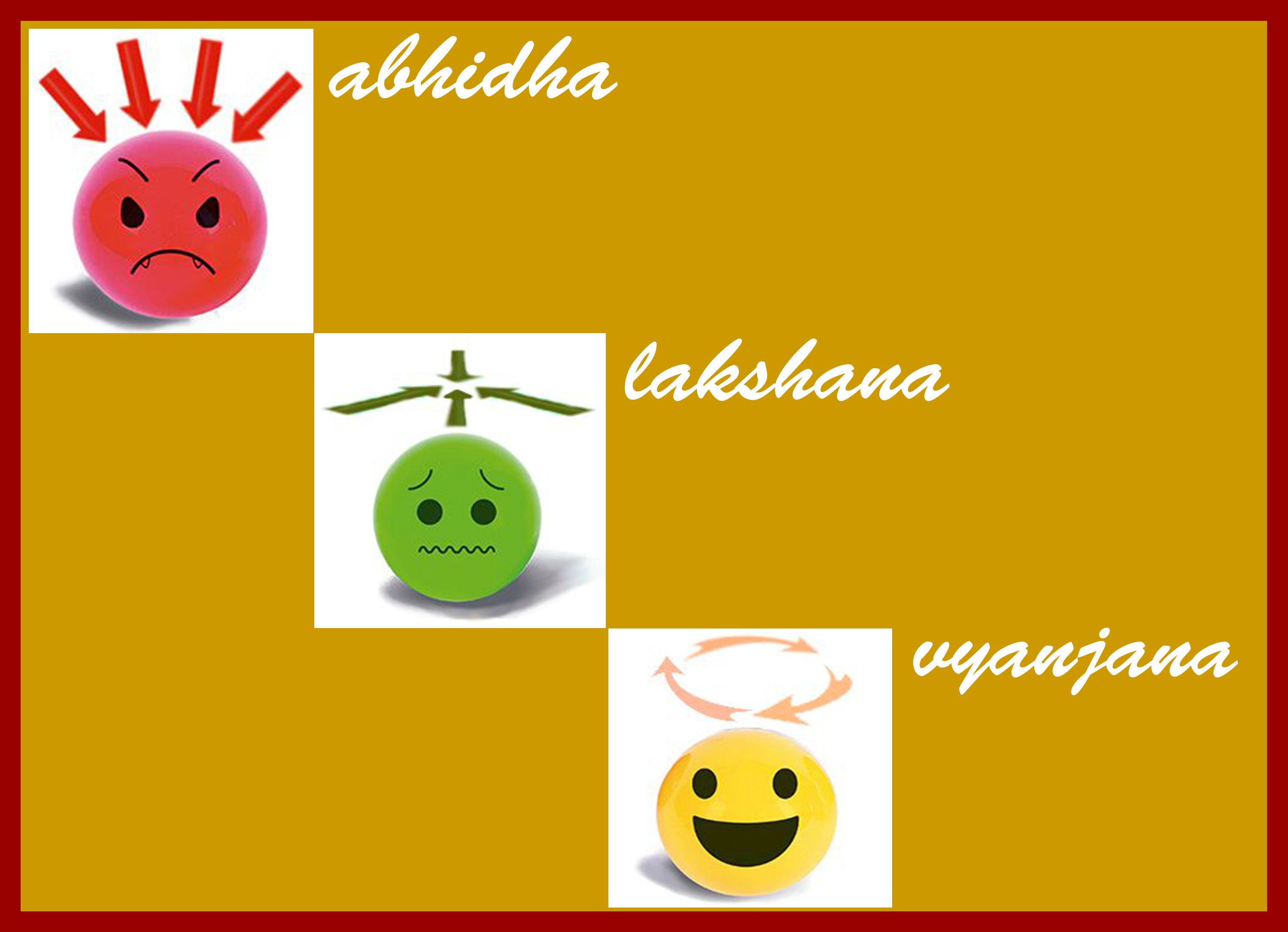
In the realm of word-power, the rhetoricians classify expressions as Abhidha, Lakshana and Vyanjana:
Abhidha implies direct/ literal/primary meaning. For example Ball is in your court will mean the ball is lying in the opponents court in the game of tennis.
In Lakshana the literal/primary meaning is rejected and removed while indicative/ implicative meaning is projected. For example the Ball is in your court through the power of Lakshana will mean It is up to you to make the next decision or step.
Further through the power of Vyanjana both, literal and indicative meanings are taken off and suggestive/intentional meaning comes forth. For example Ball is in your court through the power of vyanjana will mean that the onus is on you.
Vyanjana or suggested meaning is the soul of the writings.
Thus the meaning of the words denoted by abhidha (verbal meaning), or hinted by lakshana (indicative meaning) or suggested by vyanjana (suggestive meaning) finally terminates into rasa (essence).
The same theory applies in the premise of visual art where lines, forms and colours replace words in expressing a particular sentiment. Thus visual art is a kind of nonverbal communication (communication through sending and receiving wordless clues). Nonverbal communication involves the conscious and unconscious processes of encoding and decoding.
Only a small percentage of the brain processes verbal communication. Nonverbal communication represents two-thirds of all communication. That is why visual arts become the more powerful tool of expression than writings. Hence, there is an English idiom "A picture is worth a thousand words".
In the words of Oscar Wilde “No great artist ever sees things as they really are. If he did, he would cease to be an artist.” Through this, it is meant that artists are required to go beyond the obvious and direct (abhidha) and through indications (lakshana) should bring out the suggestive and allusive (vyanjana) to give the essence (rasa) to the viewers.